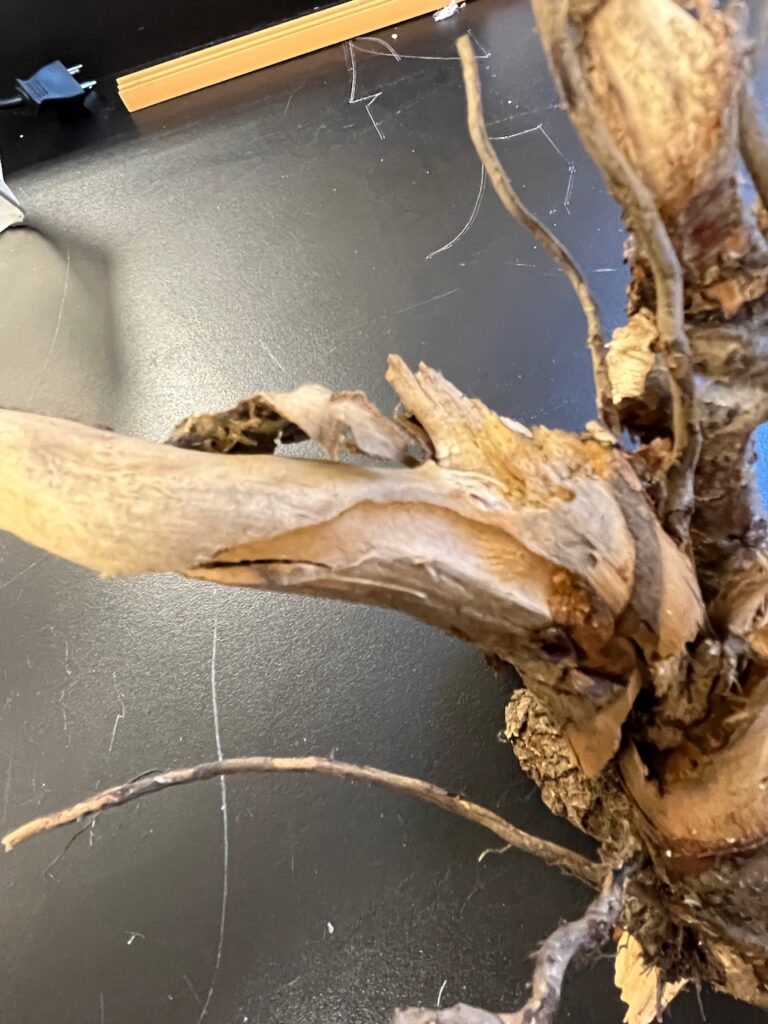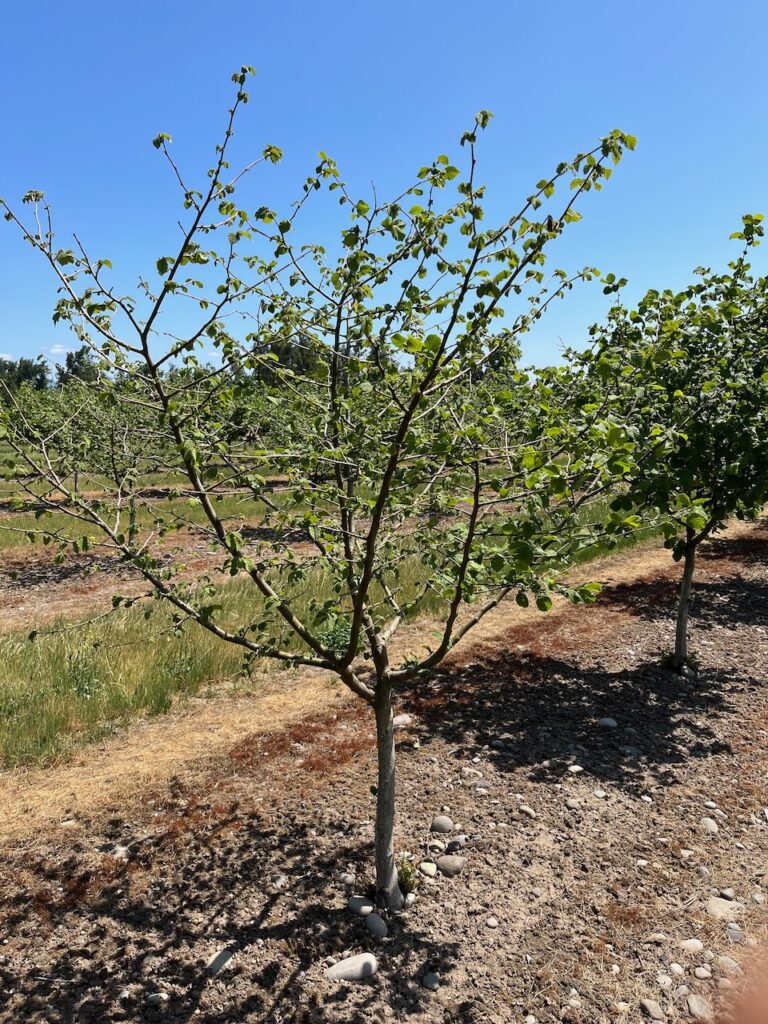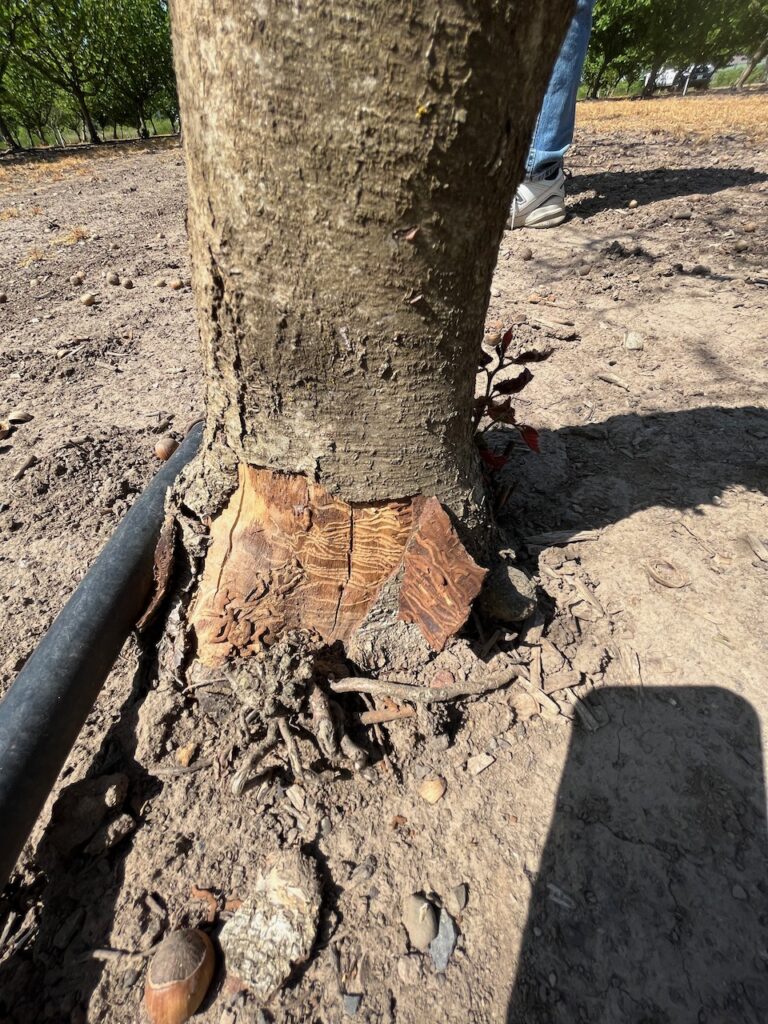A few years back we were trying to attract flatheaded borers (Buprestidae) to traps when we realized another borer pest may also be problematic in hazelnuts. Working with a pheromone company (AlphaScents, Canby OR) we deployed some pheromone of the California prionus beetle in an orchard that was exhibiting symptoms of decline. We started catching high numbers of Prionus californicus males, up to 25 per trap per week. That is a lot of biomass as these are huge beetles, adults can be 3.5 inches long. While we occasionally dig one up when investigating hazelnut root problems, we had not really had growers complain.
That changed in 2022 when reports of these root borers causing severe tree decline and death started coming in. This year, the problem seems to have exploded with many growers losing production age trees to the borer. Not just a few. Significant numbers of trees and it is clear from these sites that the problem is spreading and getting worse.
Severely affected trees had difficulty leafing out and are now showing signs of die back. Some trees were nearly dead. On all of these trees, there was a lot of sign of borers right at the soil line. Stripping some bark at the base of the tree may show larval galleries packed with sawdust and this is a good indicator that the root system of the tree may also be infested. Some of these same trees also had flatheaded borer damage up higher in the tree. Usually, flatheaded borers are more of a problem on young trees, but in this situation they are attacking major scaffold branches and the trunks of 5-7 year old trees.








Management of this pest is challenging. The lifecycle is long, lasting 3-4 years for the larvae below ground. It is thought that young larvae may affect more of the peripheral feeder roots with convergence on the crown as they mature. We are also seeing a lot of larvae above the root crown around the base of the tree. Insecticides are not incredibly effective, but there is a consensus that imidacloprid (Admire Pro, Generics) applied to the soil or through injection may help if applied over multiple years. Insecticide residues on trunks may also deter ovipositing female borers or may kill eggs and newly emerged larvae. The adults are short lived, and are thought to be active from July to August. They have non-functional mouth parts (they don’t feed) and their singular mission is to mate an lay eggs. Females call males using a sex pheromone, which has been commercialized. This allows a mass trapping approach for management. If used consistently over multiple years, mass trapping can remove a significant number of males from the local population, which can reduce female mating success and pest pressure. We have had good luck with baited panel traps hung low from trees (see suppliers). Males are good fliers and are super sensitive to the pheromone. A low density of traps will effectively trap a large area.
Cherries, pecans, hops are other specialty crops that are also affected by this pest. So we are not alone. Pest management experts from those industries may have additional insights.

Resources:
USU: https://extension.usu.edu/pests/ipm/notes_ag/fruit-prionus-root-borer
WSU: https://treefruit.wsu.edu/crop-protection/opm/california-prionus/
Suppliers:
AlphaScents: https://alphascents.com/products/prionus-longhorn-beetles-lure
Evergreen Growers Supply: https://www.evergreengrowers.com/prioonus-californicus-lure-group-prical.html



